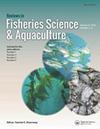Cost–Benefit Analysis of Alternative Techniques for Rehabilitating Abalone Reefs Depleted by Abalone Viral Ganglioneuritis
引用次数: 3
Abstract
The relative cost–benefit of alternative methods for rehabilitating blacklip abalone (Haliotis rubra) reefs depleted by viral ganglioneuritis was evaluated using quantitative population and bio-economic modeling. Fishery assessment models were adapted to describe population dynamics and economics of reseeding, translocation, and natural rebuilding. Past and current literature on reseeding, translocation, and mortality rates informed a stakeholders’ workshop that agreed on the parameters for the analysis. Comparative economic performance was quantified as the impaired value of the individual transferable quota from the area until the stock recovered to the level of maximum sustainable yield, as it was prior to the abalone viral ganglioneuritis impact. When the cost of capital is considered, none of the intervention scenarios produced any cost–benefit above that estimated to accrue from an unfished natural recovery. The translocation of adults and reseeding of juveniles were found to be similarly effective largely due to the productivity of the assumed stock–recruitment relationship at low stock densities. Across the scenarios, translocation was estimated to always at least pay for direct costs but rarely covered capital costs while reseeding only covered direct costs if the price of abalone was >$25/kg and seed was <$0.50 per individual. When a depensatory form of stock–recruitment relationship, related to adult biomass, was assumed, translocation was estimated to be an order of magnitude more effective due to the time required to augment the breeding biomass with reseeded juveniles.恢复因鲍鱼病毒性神经节神经炎而枯竭的鲍鱼礁的替代技术的成本效益分析
利用定量种群和生物经济模型评估了恢复因病毒性神经节神经炎而枯竭的黑唇鲍鱼礁的替代方法的相对成本效益。渔业评估模型被用于描述种群动态和重新播种、迁移和自然重建的经济学。过去和目前关于重新播种、易位和死亡率的文献为利益攸关方研讨会提供了信息,该研讨会就分析参数达成了一致。比较经济绩效被量化为该地区个体可转让配额的受损价值,直到种群恢复到最大可持续产量水平,因为它是在鲍鱼病毒性神经节神经炎影响之前。当考虑到资金成本时,没有一种干预方案产生的成本效益高于未完成自然采收率的估计成本效益。发现成虫的易位和幼虫的补种同样有效,主要是由于在低种群密度下假定的种群补种关系的生产力。在所有情景中,估计迁移总是至少支付直接成本,但很少支付资本成本,而重新播种仅在鲍鱼价格为25美元/公斤且种子低于0.5美元/个人时支付直接成本。当假设与成虫生物量相关的种群补充关系的依赖形式时,由于需要时间用重新播种的幼鱼来增加繁殖生物量,估计易位是更有效的一个数量级。
本文章由计算机程序翻译,如有差异,请以英文原文为准。
求助全文
约1分钟内获得全文
求助全文

 求助内容:
求助内容: 应助结果提醒方式:
应助结果提醒方式:


